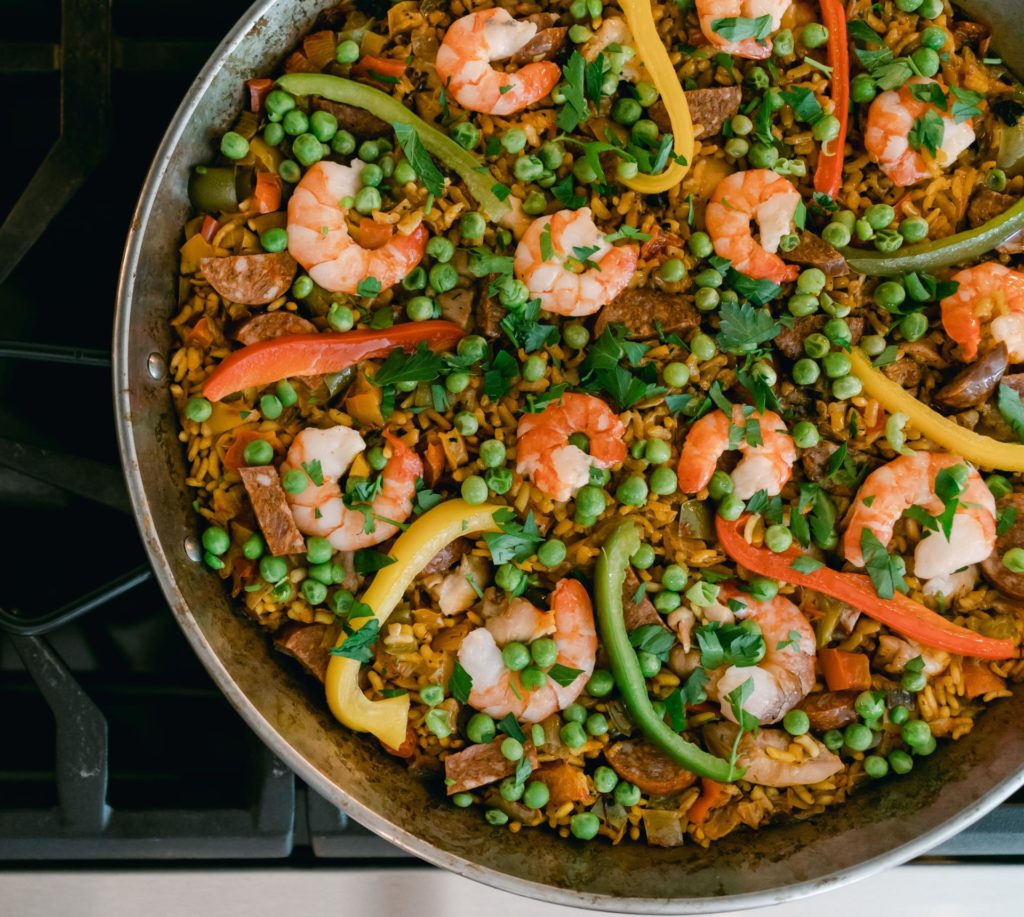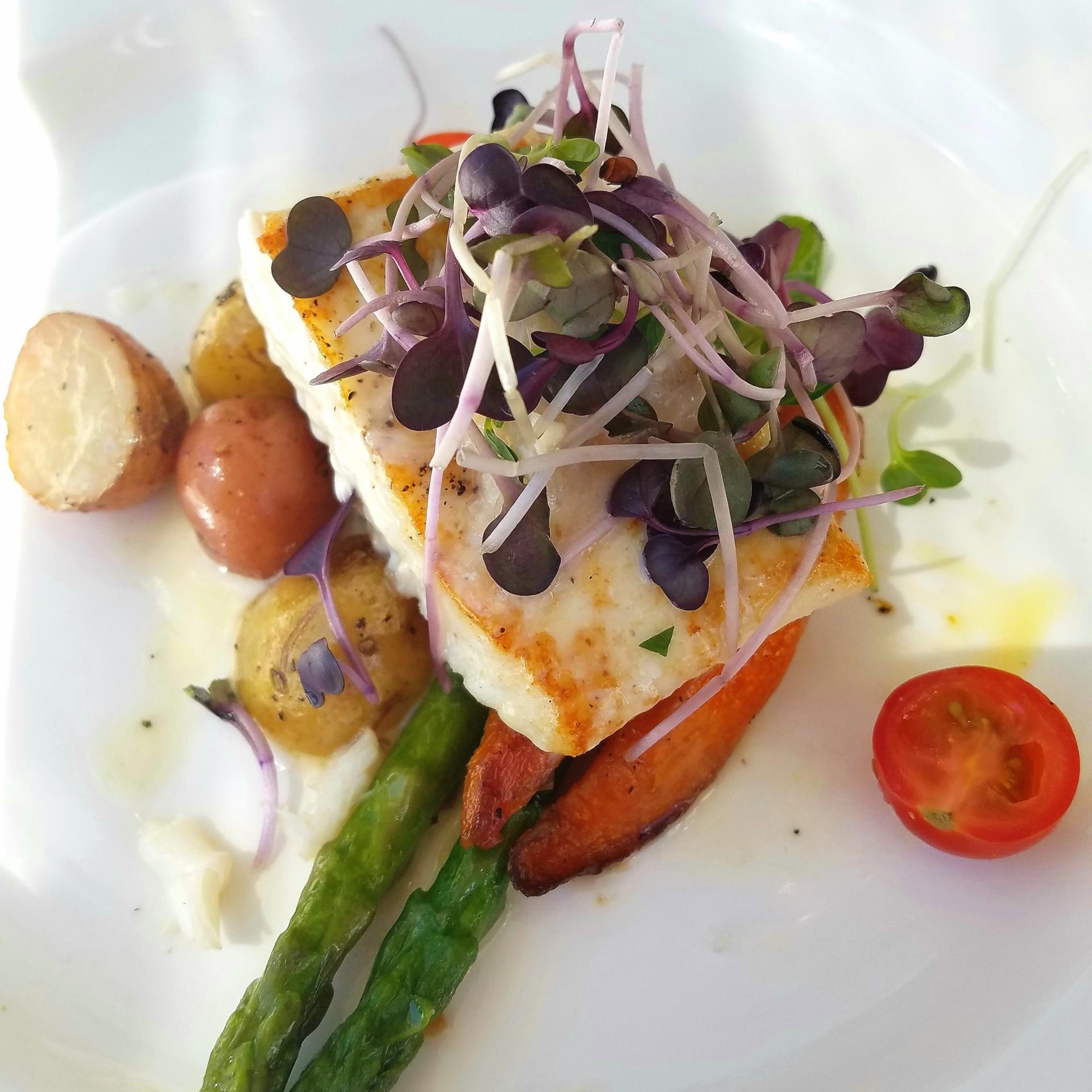Fish + Seafood = Brain Food
For as long as I can recall, I’ve heard the saying that fish and seafood are “brain food”. I have to admit that I did not give much thought to what that really meant, even after professionally getting into the culinary arts. But over the last few years, as I have learned much more about foods that support brain function and overall health and wellbeing, that saying takes on a deeper, more relevant meaning.
Lean proteins, like fish and seafood, are essential ingredients to include when cooking health and brain-boosting meals. Fish and seafood top the list, as they are the best sources of omega-3 fatty acids, particularly DHA, and many other essential vitamins and minerals. These nutrients help boost memory, concentration, mood, and general brain health. They are also great for our hearts and support our immune systems.
WHY I LIKE COOKING WITH FISH AND SEAFOOD
Fish and seafood rate highly on my ingredient choice list because they:
- are quick-cooking which is especially helpful on busy nights
- only require simple seasoning and preparation methods
- have light, fresh, sometimes sweet, and generally interesting flavor profiles
- are versatile – can be served as an appetizer or entree, in a soup or stew, as a component of breakfast or brunch, or in a salad
- are great sources of lean, low-calorie protein bursting with essential nutrients for healthy living
Note: Those with fish, shellfish, or crustacean allergies should avoid handling and consuming fish and seafood.
SELECT
The key to enjoying great tasting fish or seafood is to start with fresh products. Here are a few tips for selecting fish and seafood.
1. BUY FROM A REPUTABLE DEALER OR MARKET.
Buy from those with demonstrated records of safe food handling practices, such as keeping their products properly refrigerated or on fresh, clean ice. Avoid roadside-type stands which may not source and/or store fish and seafood properly.
2. SMELL BEFORE YOU BUY.
Fresh fish or seafood should smell clean and fresh, or a bit briny like the sea, but not fishy, off, sour or pungent. Pass it up if it does not smell right.
3. FOR WHOLE FISH, CHECK THE EYES, GILLS, AND SCALES.
Look for clear, bright eyes and gills that are rich, red in color. Scales should be shiny and metallic-looking and the fish should feel firm to the touch.
4. FOR FROZEN FISH, CHECK FOR SIGNS OF THAWING AND RE-FREEZING.
There should be no frost or ice crystals on the frozen fish or seafood. Also, avoid purchasing packages that look damaged or partially open.
5. KEEP IT COOL.
Buy fresh or frozen fish and seafood at the end of your shopping trip and go directly home to refrigerate or freeze it. For periods longer than 30 minutes, place the fish or seafood in a cooler with ice.
For further information on selecting fish and seafood and sustainability, check out these links –
STORE
FRESH FISH may be stored in the refrigerator in its original wrapper for up to 2 days after purchase. If it will be longer than that before it is prepared wrap it tightly in a moisture-proof bag and store it in the freezer.
Fish that has been “previously frozen” and thawed at the market should not be refrozen. Prepare it within 2 days of purchase.
FRESH SHELLFISH purchased in their shells can be stored in a shallow container covered with a moist paper towel (not airtight) and refrigerated. Use mussels and clams within 2 days, and oysters within 7 days of purchase. Discard any shellfish with broken or cracked shells, or those that die during storage.
Shellfish without shells can be placed in a tightly sealed container and frozen for up to 3 months.
FROZEN FISH AND SEAFOOD should be kept frozen until ready to use. Prior to cooking, thaw frozen fish or seafood gradually in the refrigerator overnight. To thaw it more quickly, place the fish or seafood in a sealed plastic bag, then immersing the bag in a large bowl of cold water. Change the water often to keep it cold.
Do not thaw and refreeze fish or seafood.

COOK
One stellar advantage of cooking with fish and seafood is that they cook up quickly, which is great for busy weeknights as well as for special events. Choose from a wide array of cooking methods – grilling, roasting, broiling, pan frying, sautéing, and poaching.
Want a few simple preparation ideas? Try these –
- Season fish or seafood with a sprinkle of favorite herbs and/or spices before cooking. Choose your favorites or try one of these spice or herb rubs.
- Serve cooked fish with a pat of herb-lemon compound butter – using this easy recipe from the New York Times food editor, Sam Sifton.
- Marinate fish or seafood in a light vinaigrette for a minimum of 15 minutes, but not more than 30 minutes, prior to cooking. Make your favorite vinaigrette recipe or try this easy balsamic marinade.
NOTE: When marinating any fish or seafood, remember to discard the marinade after use. Do not save it to use as a sauce on the cooked fish or seafood
COOKING BASICS – FISH AND SEAFOOD
The amount of time required to cook fish or seafood varies by type, the cooking method, and doneness preference. Here are some general guidelines.
|
Approximate Cooking Time
|
Checking for Doneness – What to Look For
|
| Fish
|
Most White Fish – about 4 – 5 minutes per 1/2 inch of thickness, or 10 minutes per inch turning halfway through for opaque and flaky interior
Salmon – about 4 minutes per side for 1-inch of thickness for medium interior
Tuna – sear for approximately 2 minutes per side for rare interior
|
- white fish should appear white-opaque (but not raw) and flake easily when probed with a fork in the center
- salmon can be cooked rare, medium, or fully cooked inside
- tuna turns dark tan or beige on the outside and is best seared to rare or medium-rare internally
- check the internal temperature when a thermometer is inserted in the thickest part – approximately
145°F for fully cooked through
120 – 125°F for medium
110 – 115°F for rare
|
| Shrimp and Scallops |
3 -5 minutes when sauteed, grilled, or added to soup or stew |
- shrimp will turn pink on the outside, white-opaque on the inside, and feel firm
- scallops are best cooked until they are just firm on the outside and opaque on the inside
- careful not to overcook shrimp or scallops as they can become rubbery
|
| Lobster |
5 minutes when steamed, boiled, or roasted |
- their shells turn red; the interior appears white-opaque
|
| Clams, Oyster, Mussels (in closed shells) |
3 – 5 minutes when steamed |
- when shells open
- they appear plump and opaque
- discard any that remain closed
|
|
Shucked Clams and Oysters |
2 – 5 minutes, depending on size, when sauteed, grilled, or added to soup or stew |
- they become firm and the edges begin to curl
|
RECIPES
SHARE
Have a favorite fish or seafood dish? Share it in the comments section.
Photos: Love + Craft Kitchen, LLC
© 2022 Love + Craft Kitchen, LLC, All Rights Reserved
|



Recent Comments